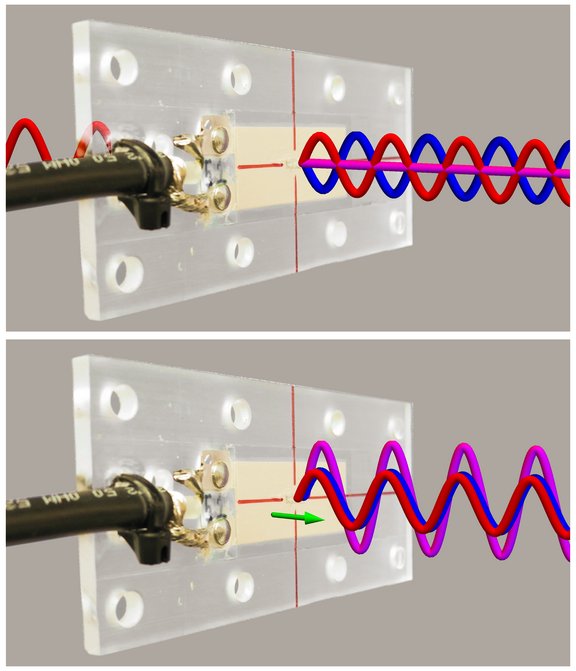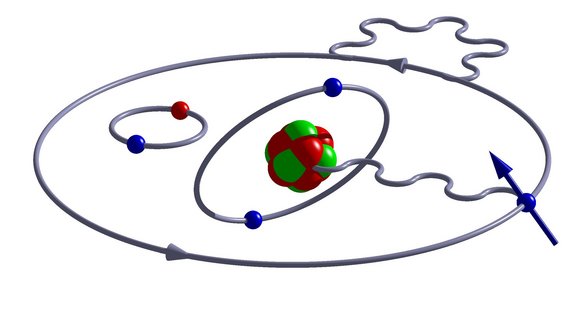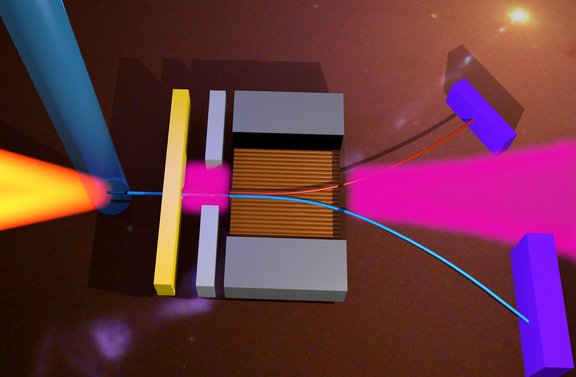Matter in Strong Laser Fields – at the Frontiers of Feasibility
The investigation of the interaction of matter with laser pulses and x-ray beams by now has reached a level at which fundamental aspects such as the quantum nature of both light and matter, relativity and couplings among the involved particles have become key issues and substantial challenges alike. Theory helps to explore the effects of extremely strong fields, even though this partly will be reached experimentally only in the near future. This requires the search for solutions of the many-body time-dependent Schrödinger and Dirac equations. Furthermore, quantum electrodynamics, nuclear effects and pair creation are considered.
One typical topic of interest is the fully relativistic understanding of quantum processes during tunnel ionization of an atom in a very strong field. A simple model of this process claims that the electron tunnels instantaneously through the laser-generated quantum barrier and appears at its exit with vanishing momentum. As a consequence, the complete momentum carried by the absorbed photons would be transferred to the ion. Meanwhile however, a complete quantum relativistic calculation has demonstrated that the above simple model needs to be corrected and that this momentum is shared by the electron and ion.
The question for the time span the electron needs for tunnelling is however controversial to date: Does this take time or is it instantaneous? Theoretical considerations based on a concept published by Nobel laureate Eugene Wigner in 1955 predict a finite tunnelling time. A recent joint theoretical and experimental study at MPIK using a refined model succeeded in translating the Wigner time into an observable quantity. An accurate analysis of electrons emerging from noble gases in ultrashort circularly polarized laser pulses gave evidence of a finite tunnelling time up to 180 attoseconds (1 as = 10–18 s).
Extreme Light-Matter Interaction – Precisely Controlling and Probing Nuclear Transitions
Quantum optics with x-ray light emerged in the last years as a new field. Of particular interest are certain atomic nuclei that only interact with x-rays with an extremely well-defined photon energy, due to an effect discovered by Rudolf Mößbauer at the precursor institute of MPIK in 1958 (Nobel Prize 1961). Spectroscopy of such precise nuclear transitions forms the basis for numerous applications across the natural sciences. Establishing coherent and quantum control of these nuclei is crucial for future applications, but remains a big challenge due to the lack of intense x-ray sources with a small energy spread.
To tackle this problem, a joint theoretical and experimental study showed that the macroscopic motion of a sample can shuffle light intensity within the spectrum of given x-ray pulses such that it is enhanced at the desired energy. A recent follow-up work exploited such improved x-ray pulses to coherently control the quantum dynamics of matter. In parallel, the theory for a first application of the motion control was developed, which allows one to measure correlations between different observables of a quantum mechanical system without the usually unavoidable perturbing back action of the measurements on the system’s dynamics.
Extremely narrow nuclear transitions are also of interest for accurate measurements. A prime example is the nuclear clock based on thorium-229, which promises to improve the accuracy of the best atomic clocks available today. Recently, a team at the LMU Munich measured with increased precision the previously uncertain nuclear transition energy. The extraction of this energy from the experimental data required simulations performed at MPIK. Now lasers specifically designed to excite the nuclei can be constructed, fuelling fundamental research based on extremely precise time measurements.
Strong-Field Quantum Electrodynamics – Modifying the Vacuum
In the language of quantum electrodynamics (QED), the electromagnetic interaction is described as the exchange of so-called virtual photons between charged particles. A consequence of this theory is the fact that there is no empty space, i. e., the vacuum can be pictorially described as being filled with virtual particles. Though their existence is only allowed for a very short time – given by quantum uncertainty – the presence of virtual particles can be detected by high-precision experiments.
Of particular interest is the QED in extremely strong fields. Those fields will influence the charged virtual particles in the quantum vacuum such that the vacuum becomes polarized changing its optical properties. Theories deal also with the fundamental question of pair production, spin dynamics and radiation reaction. In the latter case a charged particle is accelerated in an electromagnetic field and emits electromagnetic radiation which in turn acts back on the particle’s motion. Intense laser fields can help to test experimentally the underlying equations. Quantum aspects of radiation reaction in electron dynamics should show up in studies using already available laser systems. This is also of importance for many-particle ensembles like a laser-generated relativistic plasma.
Very strong fields also prevail in the vicinity of the nuclei of heavy elements. High-precision QED calculations of the inner structure of matter for especially highly charged ions are of particular relevance for our institute. The interplay of theory and experiment significantly contributes to the determination of fundamental properties such as the magnetic moment of the electron. On the one hand, comparison with precision experiments permits validation of QED predictions, while on the other hand theory helps to determine natural constants like the electron mass: its value became by an order of magnitude more accurate.
Laser Astrophysics – Cosmic Accelerators in the Laboratory Scale
Highly intense laser pulses already enable the acceleration of particles to energies up to the order of gigaelectronvolts (1 GeV = 109 eV). In close collaboration with external experimental groups, MPIK researchers developed models for the production of ultrarelativistic lepton beams consisting of electrons and positrons in equal amounts via bremsstrahlung photons that convert to electron-positron pairs. Furthermore, more recent simulations demonstrated various concepts to generate polarized intense lepton and GeV gamma beams. They are based on spin-dependent high-energy photon emission when polarized intense laser beams collide head-on with unpolarized electron beams producing electrons and positrons with spin parallel and anti-parallel, respectively, to the laser’s magnetic field direction.
The investigation of such highly energetic processes on laboratory scale is of considerable importance also for astrophysics: Cosmic gamma-ray bursts, for example, emerge from the extremely collimated ultrarelativistic leptonic jets which are emitted along the rotation axis of certain types of collapsing stars.



